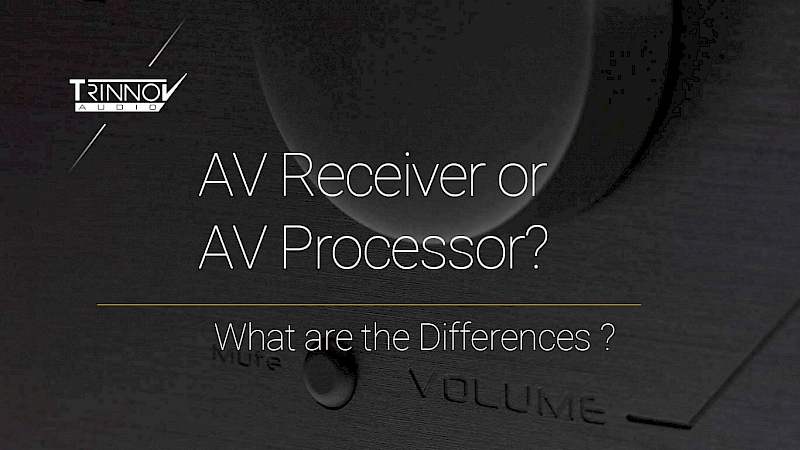
Starting a home theater can be overwhelming sometimes because getting the appropriate equipment can be challenging. You may have to familiarize yourself with many industry terms before deciding what the appropriate equipment might be for you.
During your search, you may come across terms like receivers, amplifiers, or preamplifiers and wonder if you need them for your home theater.
Knowing what they do will help you decide if you require any of them. AV processors and AV receivers are some of the most common equipment in the theater, but what do they do?
What is an AV Receiver?
As the name implies, receivers receive audio and video signals from various input devices and send them to their respective output devices. These electronic devices control and drive your home theater with built-in amplification.
This is often fairly modest, as these products are not designed to drive power-hungry speakers or fill larger rooms. This is typical for those products found in the sub - €1000 range that are considered entry-level AV receivers.
What they do provide is an easy and cost-effective way for users to control and switch between various audio and video inputs. They typically feature several HDMI inputs, as well as Digital and Analog inputs for other devices, and often incorporate streaming services like Airplay or Spotify Connect.
This allows users to easily share audio and video sources without the need for extra boxes. They often also feature extra zones which can be used to connect additional amplifiers and speakers to power, say an outdoor audio system or maybe a pair of Hifi speakers in another room.
Although the AV receiver is a simple one-box solution, it also has its shortcomings:
- They often lack the tuning and calibration options you see on higher-end AV Receivers and Processors
- The built-in amplification does limit you somewhat with respect to the speakers or rooms in which they are suitable.
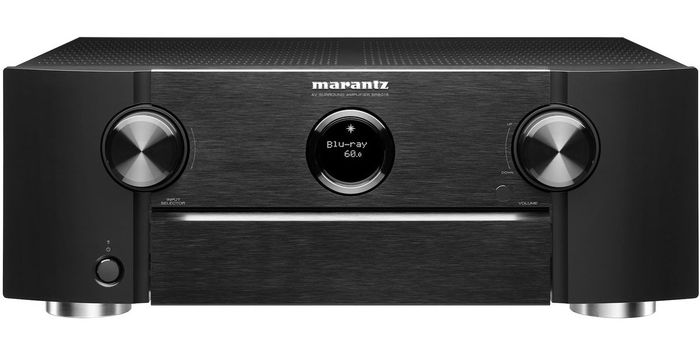
Marantz SR6015 - 9.2 AV receiver
What is an AV Processor?
Although the AV receiver is a simple one-box solution, it also has its shortcomings:
- They often lack the tuning and calibration options you see on higher-end AV Receivers and Processors.
- The built-in amplification does limit you somewhat with respect to the speakers or rooms in which they are suitable.
Preamplifiers or processors are the brains behind any mid to high-end home theater system. They're similar to AV receivers in that they provide source switching and decoding of all the various surround sound formats, audio/video processing, and volume control.
But unlike receivers, preamp/processors have no built-in amplification and are dedicated to the job of being the “brains” of the system. This means they usually have more processing power available. Consequently, extra channels or flexible tuning and calibration options can be included. They also cost more as they include higher quality components for increased performance.
Some more advanced AV Processors also allow upgrades to both software and hardware to keep up with the latest technologies. As a matter of fact, Trinnov excels in that area with its Altitude platform, which is arguably the most flexible and upgradable AV Processor platform ever engineered.
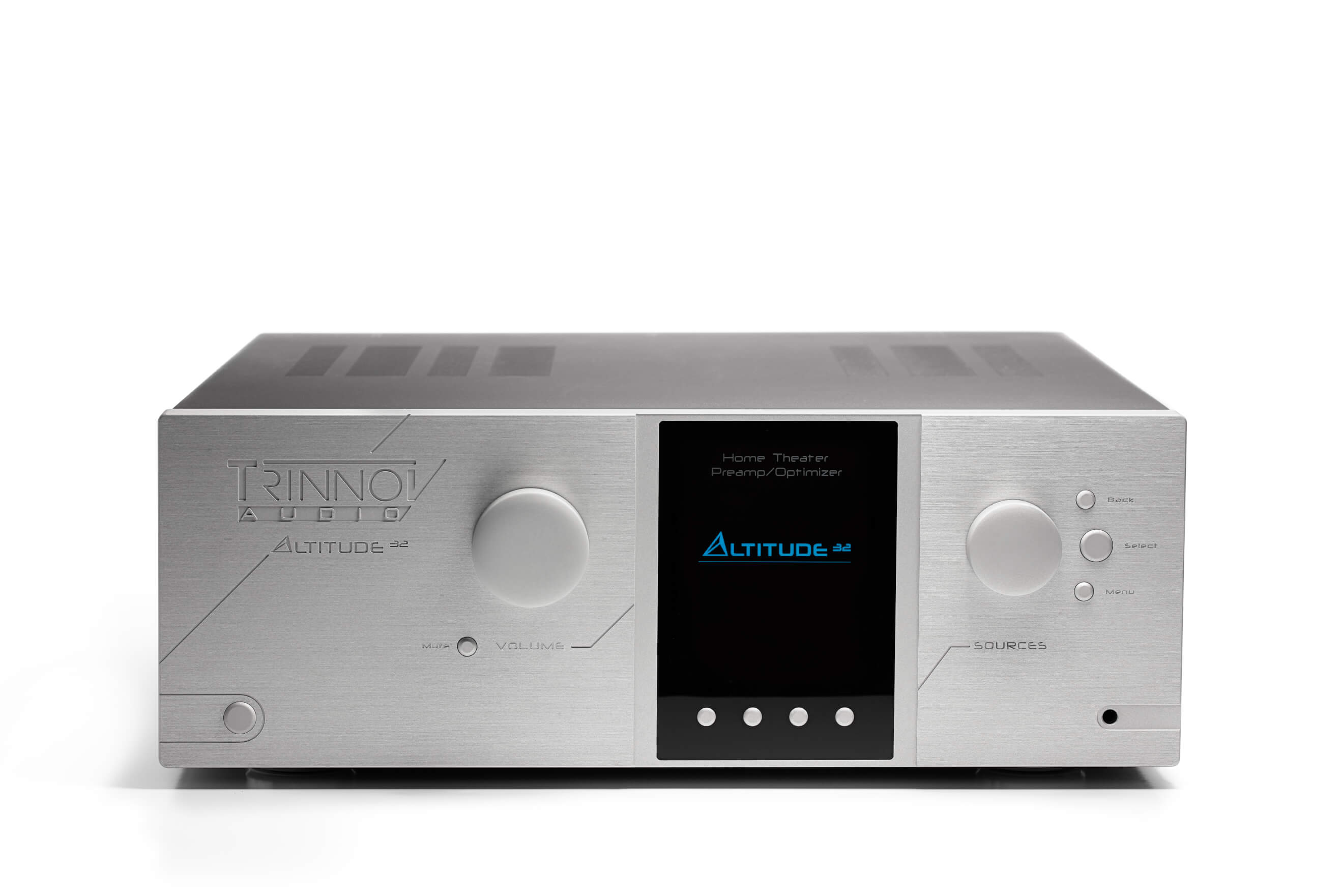
The Altitude32 was the first processor to render up to 32 channels back in 2014
What is the difference between an AV Receiver and an AV Processor?
According to the most basic definition, the main differences between an AV Receiver and an AV Processor are cost and power amplification.
But rather than asking what the differences are, isn’t it more relevant to try to explain which one is the most suitable for you?
In most cases, deciding between an AV processor and an AV receiver depends on factors like budget and what you desire from your home theater in terms of performance. Let’s review these factors in more detail.
Which one should I choose?
Budget
Even though some very High-End AV Receivers are now on the market, it is very likely that an AV Receiver will end up being your choice if you are on a budget. Indeed, in most cases, an AV Receiver is significantly cheaper than a more specialized AV Processor. Furthermore, it is designed as part of a more modest system overall and does the job of multiple boxes.
Therefore, if you don’t have any intention to upgrade your system to newer technologies or higher performance in the foreseeable future, an AV Receiver might well meet your needs and satisfy you fully.
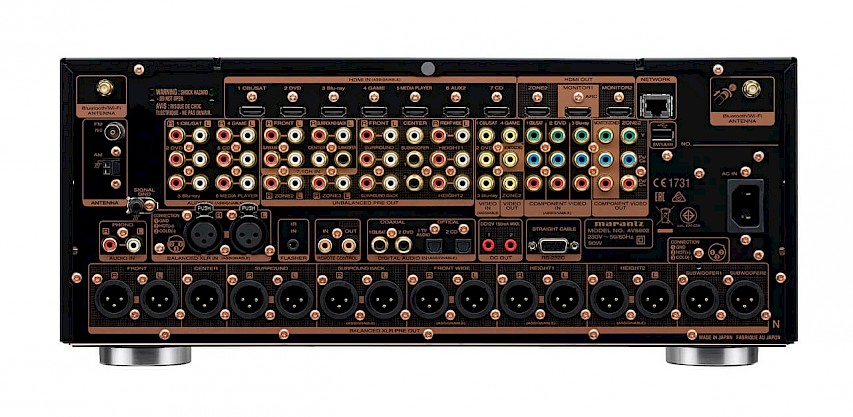
Marantz AV8805A Back Panel Connectivity
Features
As discussed, an AV Processor is a high-performer compared to an AV Receiver. It might perform fewer tasks but does them better than its AV Receiver counterpart.
Here is the area where, on average, an AV Processor will perform better:
- Audio performance (better signal-to-noise ratio, less distortion…)
- Decoding and rendering (higher number of discrete channels decoding, more flexibility…)
- Audio processing (advanced room correction, sophisticated bass management…)
On the other hand, here is where an AV Receiver usually wins:
- Multiroom capability (even if limited)
- Streaming options (Spotify Connect, Airplay…)
- Minimum space needed in the equipment rack (since it includes amplification rather than requiring external amplifiers)
With an AV Receiver, you often trade budget and features against performance and upgradeability.
Performance
Like in High-End 2-channel systems, most users will prefer to use separate and specialized components to maximize the performance of their system. In the context of home theater, matching the amplifiers to your speakers and room characteristics is absolutely essential if you want to achieve the highest performance.
With an AV Receiver, your choice of power amplification is limited, and often too low for large rooms, power hungry speakers, and/or subwoofers. Although one could argue that the preamplifier and power amplifier sections within an AV Receiver are optimized for another, it is also something you can achieve with a careful selection of preamplifier and power amplifiers.
Although one could argue that the preamplifier and power amplifier sections within an AV Receiver are optimized for another, it is also something you can achieve with a careful selection of preamplifier and power amplifiers.
As an example, we design our Amplitude power amplifiers to achieve optimal gain matching with our range of Altitude processors. Anyone who has experienced the combination of an Altitude processor and an Amplitude power amplifier will confirm the benefit in terms of noise.
Upgradability
This factor is often overlooked: AV Receivers are rarely upgradable.
Home theater technologies tend to evolve fairly quickly and AV Receivers are rarely upgraded. They tend to be replaced. Over the years, this fact can easily become an unanticipated, hidden cost.
There are several situations that might lead you to change your AV Receiver:
- A new generation of HDMI
- New Audio and/or Video standards
- System upgrades (e.g., requiring more power, or adding more speakers or subwoofers….)
These are just some common situations where you may need to upgrade the AV Processing part of your system. There are others.
With an AV Receiver, you usually have no choice other than buying a new one.
With some AV Processors, you could either wait for a software update to gain access to a new feature, or a hardware upgrade to move to the next generation of HDMI.
Note that not all AV Processors benefit from the same upgradeability. We were quite proud last year to announce a software update that actually increased the number of outputs by four channels, free of charge… something never seen before in our industry.
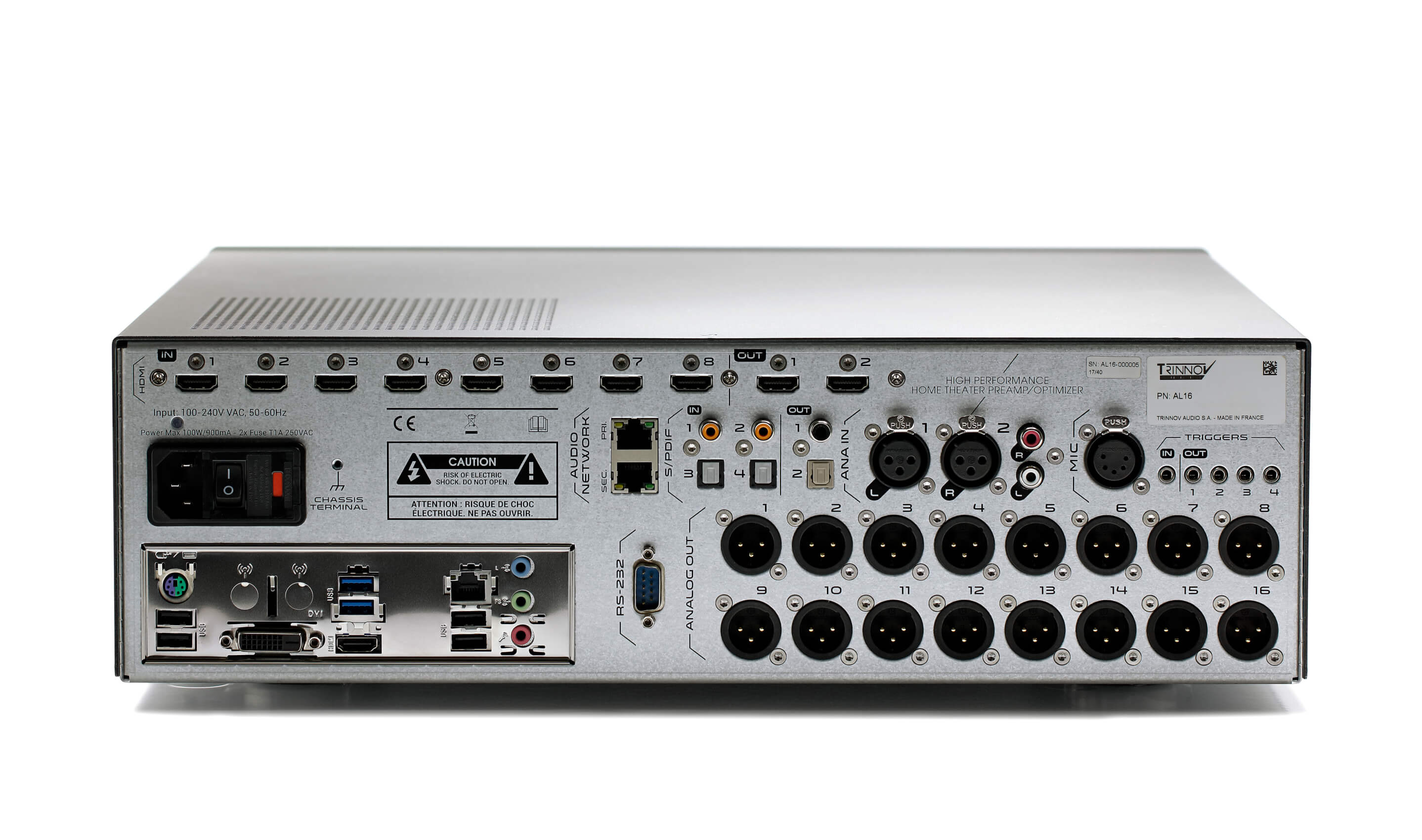
Trinnov's Altitude16 professional grade connectivity
Conclusion
When comparing AV receivers to AV processors, the main difference is in their basic functionality. Therefore, your decision to get a receiver or an AV processor for your home theater depends on your needs and expectations.
If your ambitions are modest and if you are not after all the latest technology upgrades, an AV receiver can do a good job. But, in the search of optimal performance for a custom home theater system, a processor remains the best solution, with increased performance and flexibility.

